Gulf Futures Challenge
A Contemporary Blueprint for Gulf Resilience through National Heritage Designation
Scientifically novel community inventories of overlooked Gulf environmental, historical, and cultural assets – underpinning resilient landscapes – will be co-produced through commerce hubs providing a blueprint for National Heritage Area designation in Florida with regional application.
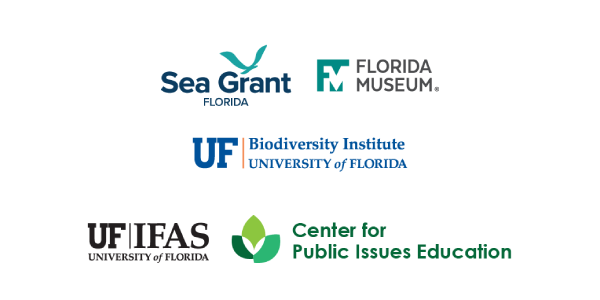
Climate change and human impacts are driving rapid loss of the inherently linked biological and cultural diversity that has sustained millennia of resilience along the Gulf of Mexico. We will undertake a first-of-its-kind scientific endeavor to integrate biodiversity, socio-economics, and cultural heritage at ecological and local scales of action. We will co-produce, with local community coalitions, a Gulf-wide synthesis of the natural and cultural drivers of organismal diversity and patterns of distribution – past and present – to predict the resilience of organisms and communities facing unprecedented change across Gulf environments. University Extension will help develop openly accessible and understandable information in support of the IUCN’s Nature 2030, a “vision that centers people as part of a just world that values and conserves nature.” The framework of Organizational Ecology will foster inclusion and unite existing multi-disciplinary University Centers and their local partner organizations. The broader foundation of information will facilitate a deep-dive to ascertain what these biological-human interactions mean via boots-on-the-ground lived experiences across a diversity of communities in Southwest Florida and realized through a National Heritage Area feasibility study. The co-development of a Gulf “digital twin”, and abiotic and biotic predictive models, will provide communities and local governments the data needed to substantiate environmental impacts across a diversity of resources that are foundational to the future of commerce, energy transitions, education, and the built environment. Ultimately, this project will generate a blueprint for resilience and ignite a growing historical-environmental-based Blue Economy to serve Gulf residents and visitors into the future.
Human resilience is necessarily intertwined with ecosystem resilience. Building resilient communities in the face of increasing environmental challenges requires integration of biological, cultural, and local knowledge at multiple scales. Through novel regional biodiversity science, we will create biocultural knowledge for local coalitions to co-produce contemporary resilience plans. Emergent principles will support establishment of a Natural Heritage Area (NHA) in Southwest Florida as the first step in developing a network of linked NHAs across the Gulf Region — taking inspiration from the Gullah/Geechee NHA, which is poised to generate $34B in heritage tourism, agriculture, and seafood industries.
Video
Presentation
Rich in maritime lifeways and vulnerable to climate change, a new scientifically-supported and community-guided consortium of biodiversity and cultural heritage stewards dedicated to the environmental, economic, and social resilience of Florida’s Gulf Coast will be formalized. This consortium will have the resources and partners needed to establish a National Heritage Area that supports a new Blue Economy – one that continues the working waterfront history.
What is the study region?
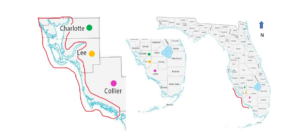
Map of Florida, zeroing in on the “Calusa Coast”, Charlotte, Lee, and Collier counties.
“Calusa Coast”: We propose an initial focus on the communities and heritage resources of the coastal and island maritime landscapes of Charlotte, Lee, and Collier counties (map areas delineated in red). This focal region experienced the full force of Hurricane Ian, including the most extensive damage and recovery aftermath. With this area as a starting point, our efforts will include assessment of connections between heritage and different communities within and beyond the focal region. (Florida county map: https://gisgeography.com/florida-county-map/, updated August 6, 2023.)
What is a Natural Heritage Area (NHA)?
National Heritage Areas are places where historic, cultural, and natural resources combine to form cohesive, nationally important landscapes. Unlike national parks, National Heritage Areas are large lived-in landscapes. Consequently, National Heritage Area entities collaborate with communities to determine how to make heritage relevant to local interests and needs.
Source: https://www.nps.gov/subjects/heritageareas/index.htm
“A National Heritage Area is a place designated by Congress where natural, cultural, historic, and scenic resources combine to form a cohesive, nationally distinctive landscape arising from patterns of human activity shaped by geography. These patterns make National Heritage Areas representative of the national experience through the physical features that remain and the traditions that have evolved in them. Continued use of National Heritage Areas by people whose traditions helped to shape the landscapes enhances their Significance” (https://www.nps.gov/subjects/heritageareas/upload/NHA-Feasibility-Study-Guidelines_FINAL-Revisions-2019_508-compliant.pdf, pp.2; see also National Heritage Area Act (P.L. 117-339, Jan 5, 2023; 54 USC §120101-120104).
NHA’s have multiple “heritages”:
- Cultural heritage includes artefacts, monuments, a group of buildings and sites, museums that have a diversity of values including symbolic, historic, artistic, aesthetic, ethnological or anthropological, scientific and social significance. It includes tangible heritage (movable, immobile and underwater), intangible cultural heritage (ICH) embedded into cultural, and natural heritage artefacts, sites or monuments.
- Natural heritage refers to natural features, geological and physiographical formations and delineated areas that constitute the habitat of threatened species of animals and plants and natural sites of value from the point of view of science, conservation or natural beauty. It includes private and publicly protected natural areas, zoos, aquaria and botanical gardens, natural habitat, marine ecosystems, sanctuaries, reservoirs etc. (https://uis.unesco.org)
- Community Heritage includes characterizing, strengthening and evaluating the following assets (https://www.nurturedevelopment.org/):
- Individual assets: the skills, gifts, and knowledge of individual people
- Associations: small informal groups coalesced around share interests and by individual choice
- Institutional assets: paid, professional groups of people that have access to and power to leverage assets to support greater community good (e.g., civic responsibility)
- Place-based assets: places where people choose to be and ascribe community value and meaning through time (e.g., heritage sites, buildings, waterways, parks, etc.); their community relevance is best understood by local people
- Connections: exchanges of assets across individuals, associations, institutions built through person-to-person relationships and connectors; connections form the basis of social capital
National Heritage Area (NHA) Feasibility Study evaluation criteria
Evaluation of the criteria must demonstrate local community involvement and feedback. (Adapted/reproduced from National Heritage Area Feasibility Study Guidelines [National Park Service 2019]). (See also National Heritage Area Act (P.L. 117-339, Jan 5, 2023; 54 USC §120101-120104.)
- An area has an assemblage of natural, historic, or cultural resources that together represent distinctive aspects of American heritage worthy of recognition, conservation, interpretation, and continuing use, and are best managed as such an assemblage through partnerships among public and private entities, and by combining diverse and sometimes noncontiguous resources and active communities;
- Reflects traditions, customs, beliefs, and folklife that are a valuable part of the national story;
- Provides outstanding opportunities to conserve natural, cultural, historic, and /or scenic features;
- Provides outstanding recreational and educational opportunities;
- The resources important to the identified theme or themes of the area retain a degree of integrity capable of supporting interpretation;
- Residents, business interests, non-profit organizations, and governments within the proposed area are involved in the planning, have developed a conceptual financial plan that outlines the roles for all participants including the federal government, and have demonstrated support for designation of the area;
- The proposed management entity and units of government supporting the designation are willing to commit to working in partnership to develop the heritage area;
- The proposal is consistent with continued economic activity in the area;
- A conceptual boundary map is supported by the public; and
- The management entity proposed to plan and implement the project is described.
Natural and Cultural Resources (NCR) Critical Tasks and Corresponding NHA Feasibility Study Criteria
At its core, a NHA Feasibility Study centers collaboration and cooperation among experts in natural and cultural heritage, history, environment, economics, policy, and community cultural knowledge, and engagement of the broader public to identify and locally define the boundaries, management plan, and themes of national significance. Because of the explicit emphasis on local leadership and participation across a diversity of communities in the study process and mandatory emphasis on delineating articulations between geography, environment, history, and cultural resources through time, the NHA Feasibility Study and evaluation criteria provide an ideal strategy for meeting NDRF Recovery Core Capability Natural and Cultural Resources priorities within the context of community disaster response and resilience planning across the “Calusa Coast” region (see box). Furthermore, meeting these NDRF priorities will directly contribute to Florida’s recent Comprehensive Historic Preservation Plan, including identified goals to “Expand and encourage public participation in historic preservation” (Goal 2), and to “Promote historic preservation at the local and regional levels” (Goal 4) (https://dos.myflorida.com/historical/explore/floridas-comprehensive-historic-preservation-plan/goals-objectives-and-strategies/).
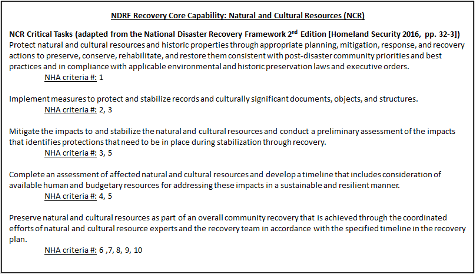
how will this project work?
The project (illustrated below) will conduct engagement and coalition-building by embracing core business principles and adaptive management that involve marketing, communications, social media advertising and evaluation. Core operating values include: (1) Introducing of the concept of an NHA as a “product” (e.g., strategy) that appeals to stakeholders passion to collectively manage and sustain the cultural and natural assets they cherish in the pursuit of hurricane recovery and resilience; (2) Marketing through traditional communications and social media outlets, affirmed by influencers and delivered by a team that represents community interests; (3) Knowledge transfer delivered through communications involving a novel web-learning platform emphasizing the meaning and value of an NHA and how this strategy, and possible designation, can contribute to resilience; (4) Participation and coalition-building will be incentivized through outreach and social marketing; and (5) Monitoring will be facilitated by a social network analysis and technology-driven “metrics dashboard” that synthesizes Inventory, Economics, Engagement and Education analysis to measure success and direct future programming, conforming to the principle of adaptive community management.
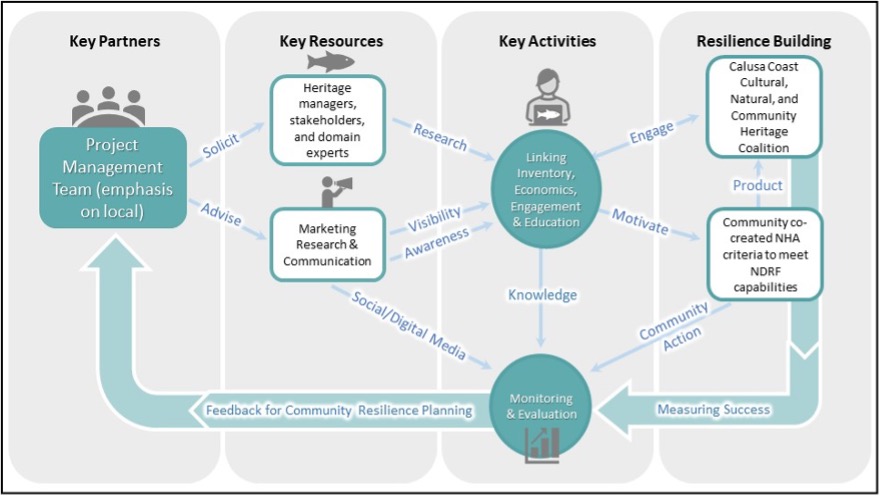
How will this project develop?
The conceptual diagram of the proposed project with a focus on the intersections of “Calusa Coast” cultural, natural, and community heritage, the project will: A) Create an inventory and characterize cultural, community, and natural heritage in the project region and produce preservation and conservation tools (e.g., public survey data, historical syntheses, natural and cultural resource maps), and public outreach and education resources in compliance with state and federal cultural and natural heritage preservation laws; B) Mobilize local community cultural and natural heritage stakeholders as well as heritage, education, policy, and economic domain experts to assess the relationship between commerce and social capital associated with heritage assets, their preservation, and their use; C) Conduct engagement and education programming to increase awareness and knowledge of the benefits of NHA status among local constituents and evaluate the approaches to policy and planning across heritage sites and resources and their relationship to the recovery and resilience of sustainable tourism and recreation opportunities.; and D) Establish an NHA in Southwest Florida to continue the preservation and messaging of the cultural core that undermines resilience in the region.
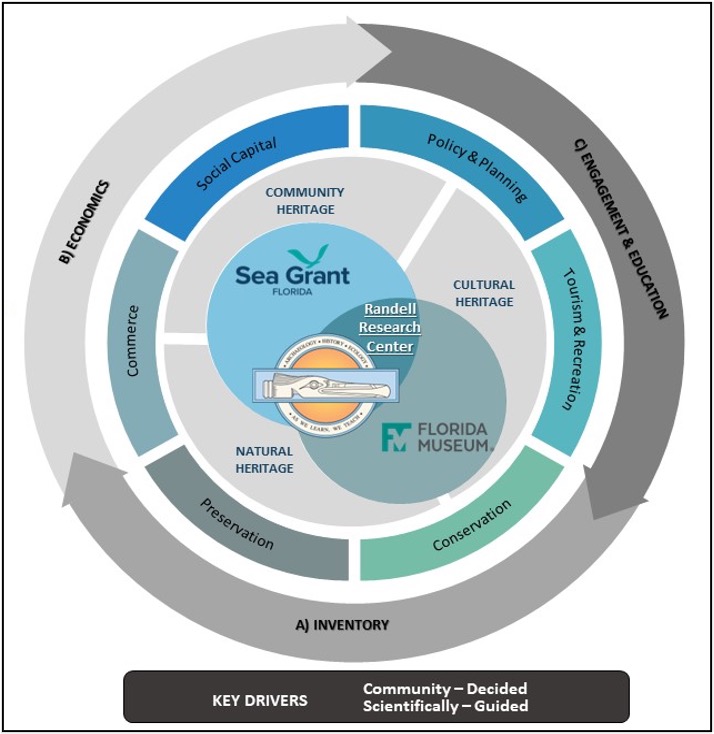
With leadership from FEMA and U.S. DOI, the establishment of a Project Management Team will draw on the FM and RRC, FSG, and UF/IFAS Communications in collaboration with local heritage leaders and community stakeholders to guide project implementation (Figure 4). Overall project leadership, logistical and fiscal, and marketing management will be shared across the FM/RRC (LeFebvre and Karim) and FSG (Sidman and Larkin) with support from additional UF programs (e.g., UF/IFAS, UF Thompson Earth Systems Institute, UF George A. Smathers Libraries, and FSG legal and economics specialists). Critically, the RRC will serve as the place-based leading entity and point of local project development, participation, and leadership recruitment (Karim). Local Community Consultants (LCCs), including subject experts, will be hired from within the project region to support and assist local heritage entity and community stakeholder leaders and participation in activities across all five Objectives. The expertise and roles of LCCs will be determined through meeting stakeholder and project participant priorities across Inventory, Economics, and Engagement and Education. Project leadership spanning the FM, FSG, UF/IFAS Communications, and LCCs will engage FEMA, DOI, and NPS representatives throughout the duration of the effort.
Potential
Partners
Organizations that will be invited to participate
Representative list of cultural and natural heritage entites or organizations with vested interest in the ecological and/or cultural resilience of “Calusa Coast” communities and Hurricane Ian recovery.
*Denotes previous or current collaborations or partnerships with key staff
| Calusa Coast” cultural and natural heritage entities | Website |
|---|---|
| Ah-Tah-Thi-Ki Museum* | https://www.ahtahthiki.com/ |
| Calusa Land Trust* | https://www.calusalandtrust.org/ |
| Calusa Nature Center and Planetarium* | https://www.calusanature.org/ |
| Calusa Waterkeepers | https://calusawaterkeeper.org/ |
| Cape Coral Museum of History* | https://capecoralmuseum.org/ |
| Captains for Clean Water | https://captainsforcleanwater.org/about-us/ |
| Captiva Cruises | https://captivacruises.com/ |
| Cayo Costa State Park | https://www.floridastateparks.org/CayoCosta |
| Charlotte County Historical Society | https://cchistoricalsociety.com/ |
| Collier County Museums* | https://colliermuseums.com/ |
| Collier County Waterkeeper | http://www.colliercountywaterkeeper.org/ |
| Conservancy of Southwest Florida | https://conservancy.org/ |
| Great Calusa Blueway, Lee County | https://www.leegov.com/parks/Blueway |
| Earthling Eco Adventures* | |
| Edison and Ford Winter Estates | https://www.edisonfordwinterestates.org/ |
| Englewood Museum | https://www.eahmuseum.org/ |
| Florida Department of Environmental Protection* (Office of Resilience and Coastal Protection) (Division of Recreation and Parks Koreshan, Estero Bay Preserve and Mound Key Archaeological State Park) | https://floridadep.gov/about-dep |
| Florida Division of Historical Resources* (Bureau of Archaeological Research) | https://dos.myflorida.com/historical/ |
| Florida Gulf Coast University | https://www.fgcu.edu/ |
| Florida Master Gardener* | https://sfyl.ifas.ufl.edu/lawn-and-garden/florida-master-gardener-program/ |
| Florida Public Archaeology Network* | http://www.fpan.us/ |
| Florida Trust for Historic Preservation | https://www.floridatrust.org/ |
| Friends of Mound House Inc.* | https://moundhouse.org/tours/friends-of-the-mound-house-annual-meeting/ |
| IMAG History and Science Center* | https://theimag.org/ |
| Koreshan State Park* | https://www.floridastateparks.org/parks-and-trails/koreshan-state-park |
| Lee County Black History Society | https://www.leecountyblackhistorysociety.org/ |
| Lee County Historical Society | https://www.leecountyhistoricalsociety.org/ |
| Lee County Natural Resources Department | https://www.leegov.com/naturalresources |
| Lee County Tourist and Development Council | https://www.leegov.com/vcb |
| Lee County Trust for Historical Preservation | https://leetrust.org/ |
| Lover’s Key State Park* | https://www.floridastateparks.org/Lovers-Key |
| Marco Island Historical Society* | https://themihs.info/ |
| Mound House (Town of Fort Myers Beach)* | https://moundhouse.org/ |
| Ostego Bay Foundation | http://www.ostegobay.org/ |
| Rookery Bay National Estuarine Research Reserve | https://rookerybay.org/ |
| Randell Research Center, Florida Museum | https://www.floridamuseum.ufl.edu/rrc/ |
| Sanibel Captiva Conservation Foundation | https://sccf.org/ |
| Seminole Tribe of Florida – Ah-Tah-Thi-Ki Museum and Tribal Historic Preservation Office* | https://www.ahtahthiki.com/; https://stofthpo.com/ |
| SW FL Archaeological Society* | https://fasweb.org/swfas/ |
| Southwest Florida Regional Planning Council | https://www.swfrpc.org/ |
| South Florida Water Management District | https://www.sfwmd.gov/ |
| Tarpon Lodge, Pine Island | https://tarponlodge.com/ |
| The Coastal & Heartland National Estuary Partnership | https://www.chnep.org/ |
| Useppa Island Historical Society | https://www.useppahs.org/ |
| West Coast Inland Navigation District* | https://www.wcind.net/ |
| Williams Academy Black History Museum | https://www.leecountyblackhistorysociety.org/our-history/ |
Project
Team
The University of Florida (UF) is one of the most comprehensive academic institutions in the world. This project will be jointly led by four UF programs – Florida Sea Grant (FSG), the Florida Museum of Natural History (FM), which operates the Randall Research Center (RRC), the UF Biodiversity Institute (UFBI), and the UF/IFAS Center for Public Issues Education in Agriculture and Natural Resources (“PIE Center”). These programs operate as cross-college centers, drawing expertise from disciplines campus-wide.
For nearly 50 years, FSG has supported integrated community-based research and outreach for the conservation and sustainable use of coastal/marine resources. FSG supports scientists affiliated with academic institutions throughout Florida (public and private, MSIs and HBCUs) and delivers marine extension programming through a network of staff who live and work in Florida’s coastal counties. FSGs mission prioritizes healthy coastal environments, sustainable fisheries and aquaculture, resilient communities and economies, environmental literacy and workforce development.
For over 25 years, the RRC has been recognized as a place-based renowned leader in the research and protection of Indigenous and historic American maritime cultural and natural heritage in Southwest Florida. Located on the shores of Pine Island Sound, at one of the largest preserved remnant Calusa towns and archaeological sites (8LL33), the site is listed in the National Register of Historic Places and is home to the 1.1 mile Calusa Heritage Trail.
Established in 2016, the UFBI is a university-wide consortium of over 100 members that facilitates interdisciplinary research and training with three main foci: (1) discovery of biodiversity, (2) using computation, modeling, and AI to describe, understand, explain, and predict patterns of biodiversity and the processes that generated those patterns, and (3) translating knowledge on biodiversity into action through relevant partnerships with conservationists, economists, journalists, social scientists, education specialists, lawyers, policymakers, representatives of state and federal agencies, and others.
The PIE Center examines how people think about, form, and act on opinions regarding complex agricultural and natural resources issues. The PIE Center’s research and educational programs help enable the public and policymakers to make informed decisions about Florida’s agriculture and natural resources sectors, specifically in these three areas: 1) Ensure Floridians’ responsible use of water and conservation of natural resources 2) Equip Florida communities and organizations to understand and adapt to changing agricultural and natural resources issues 3) Identify communication strategies to support and grow Florida’s food and agricultural economy.
Lead Investigators
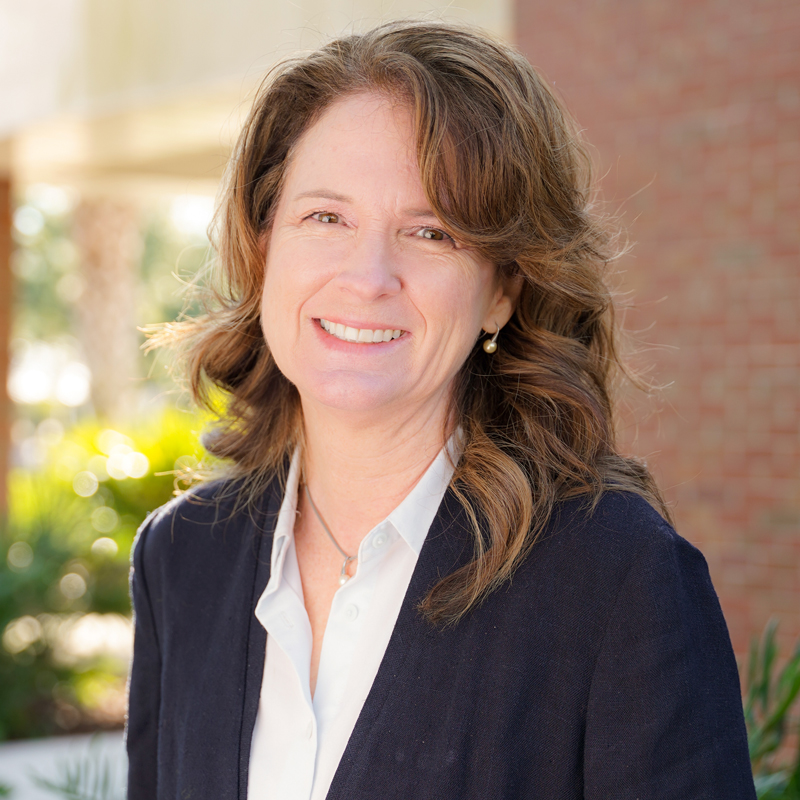
University of Florida
Sherry Larkin
Florida Sea Grant
Director & Professor

University of Florida
Michelle LeFebvre
Florida Museum of Natural History
Director & Assistant Curator
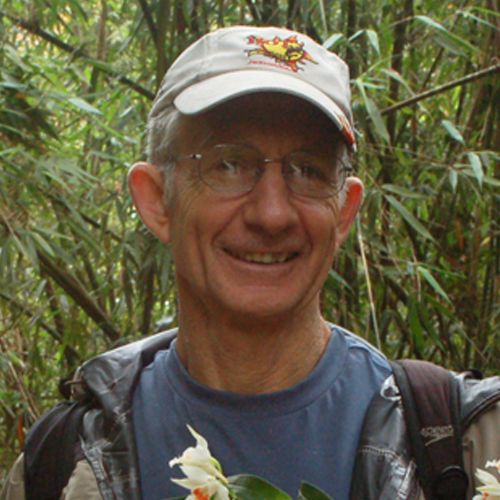
University of Florida
Doug Soltis
Biodiversity Institute
Distinguished Professor
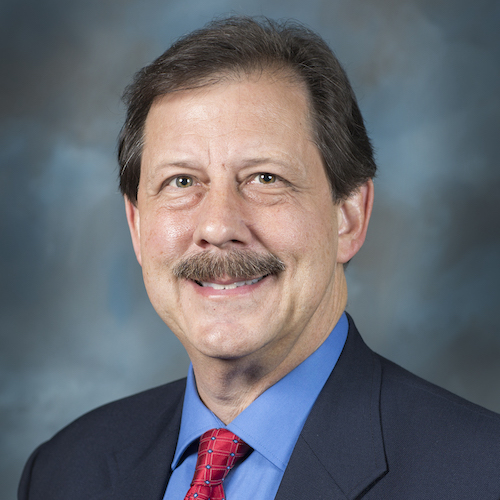
University of Florida
Ricky Telg
UF/IFAS Center for Public Issues Education
Director & Professor

Florida Gulf Coast University
Mike Savarese
The Water School
Distinguished Professor

Florida Atlantic University
Sara Ayers-Rigsby
Florida Public Archaeology Network
Director of Southeast/Southwest
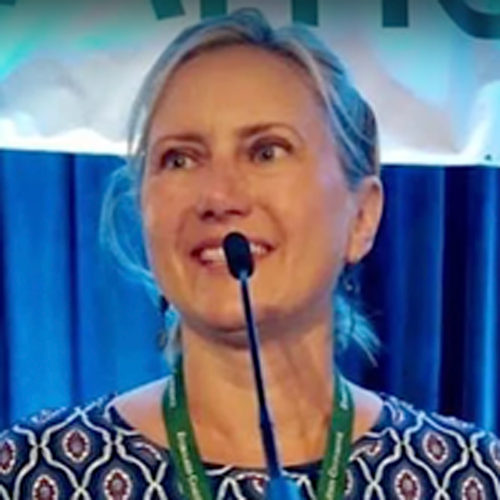
Non-Profit Organization
Jennifer Hecker
Coastal & Heartland National Estuary Partnership
Executive Director
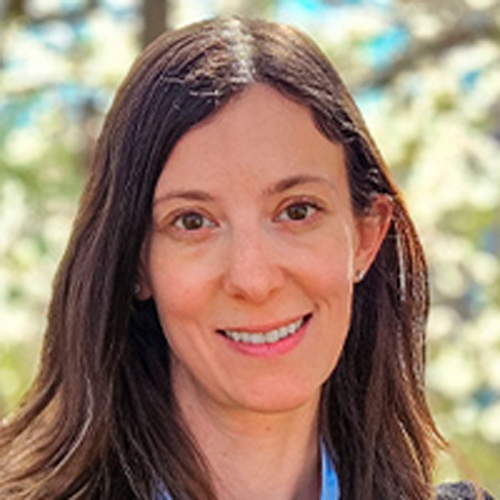
Non-Profit Organization
Anne Bowser
NatureServ
Chief Executive Officer
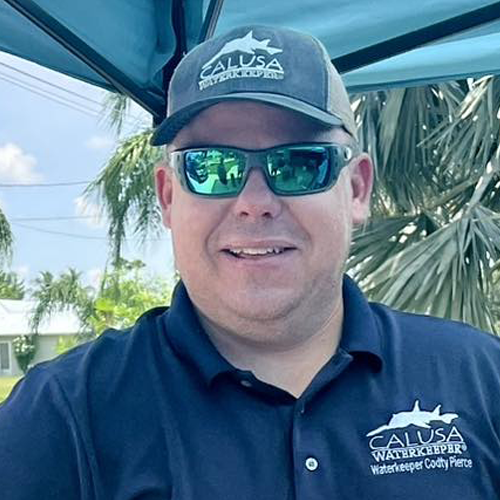
Non-Profit Organization
Codty Pierce
Calusa Waterkeeper
Waterkeeper
Key Partners
references
Bosher, L., Kim, D., Okubo, T., Chmutina, K., and R. Jigyasu. 2019. Dealing with multiple hazards and threats on cultural heritage sites: An assesment of 80 case studies. Disaster Prevention 29(1): 109-128.
Beel, D.E., Wallace, C.D., Webster, G., Nguyen, H., Tait, E., Macleod, M., and C. Mellish. 2017. The production of rural heritage, digital archives and the role of volunteers. Journal of Rural Studies 54: 459-468.
Bridgewater, P. and I.D. Rotherham. 2019. A critical perspective on the concept of biocultural diversity and its emerging role in nature and heritage conservation. People and Nature 1: 291-304.
Chmutina, K. Tandon, A., Kalkhitashvili, M., Tevzadze, M, and I. Kobulia. 2021. Connecting heritage, vulnerabilities and capacities through participatory game. International Journal of Disaster Risk Reduction 53: 102005.
Fabricatti, K. Boissenin, L., and M. Citoni. 2020. Heritage Community Resilience: towards new approaches for urban resilience and sustainability. City, Territory, Architecture. 7, 17 (2020). https://doi.org/10.1186/s40410-020-00126-7.
Florida Ocean Alliance. 2020. Securing Florida’s Blue Economy. Strategic Policy Plan for Florida’s Oceans and Coasts, June 2020. https://static1.squarespace.com/static/614dece04ec1fe659b8317d5/t/61636e0bd301b565754841d2/1633906192962/2020+FOA+Strategic+Policy+Plan_063020a+copy.pdf
Global Platform for Heritage and Resilience. 2013. Issues and Opportunities for Reducing Disaster Risk. Fourth Session, Geneva, Switzerland.
Imperiale, A.J., and F. Vanclay. 2016. Experiencing local community resilience in action: Learning from post-disaster communities. Journal of Rural Studies. 47: 204-219.
Karzen, M. and D. Demenja. 2020. Importance of storytelling: How to create more resilient cultural heritage. Nova Prisutnost 18(3): 653-668.
Spenneman, D.H., and Graham, K. 2007. The importance of heritage preservation in natural disaster situations. International Journal of Risk Assessment 6: 993-1001.
Tangit, T.M., Foo., J., and B. Saibeh. 2022. Exploring Asset-Based Community Development in intangible cultural heritage management. Journal of Islamic, Social, Economics and Development. 7(51): 39-50
Torres Castro, D.A. 2021. Community organization for the protection of cultural heritage in the aftermath of disasters. International Journal of Disaster Risk Reduction, Volume 60, 102321.
Links:
Resiliency tactics during financial crisis: The nonprofit resiliency framework
Engaging stakeholders on TikTok: A multi-level social media analysis of nonprofit Microvlogging
Forging Connections: Nonprofits, TikTok, and Authentic Engagement–A Mixed-Methods Study
NOAA wellbeing indicator: https://www.ncei.noaa.gov/maps/gulf-data-atlas/atlas.htm?plate=Social%20WellBeing%20-%20Social%20Services)